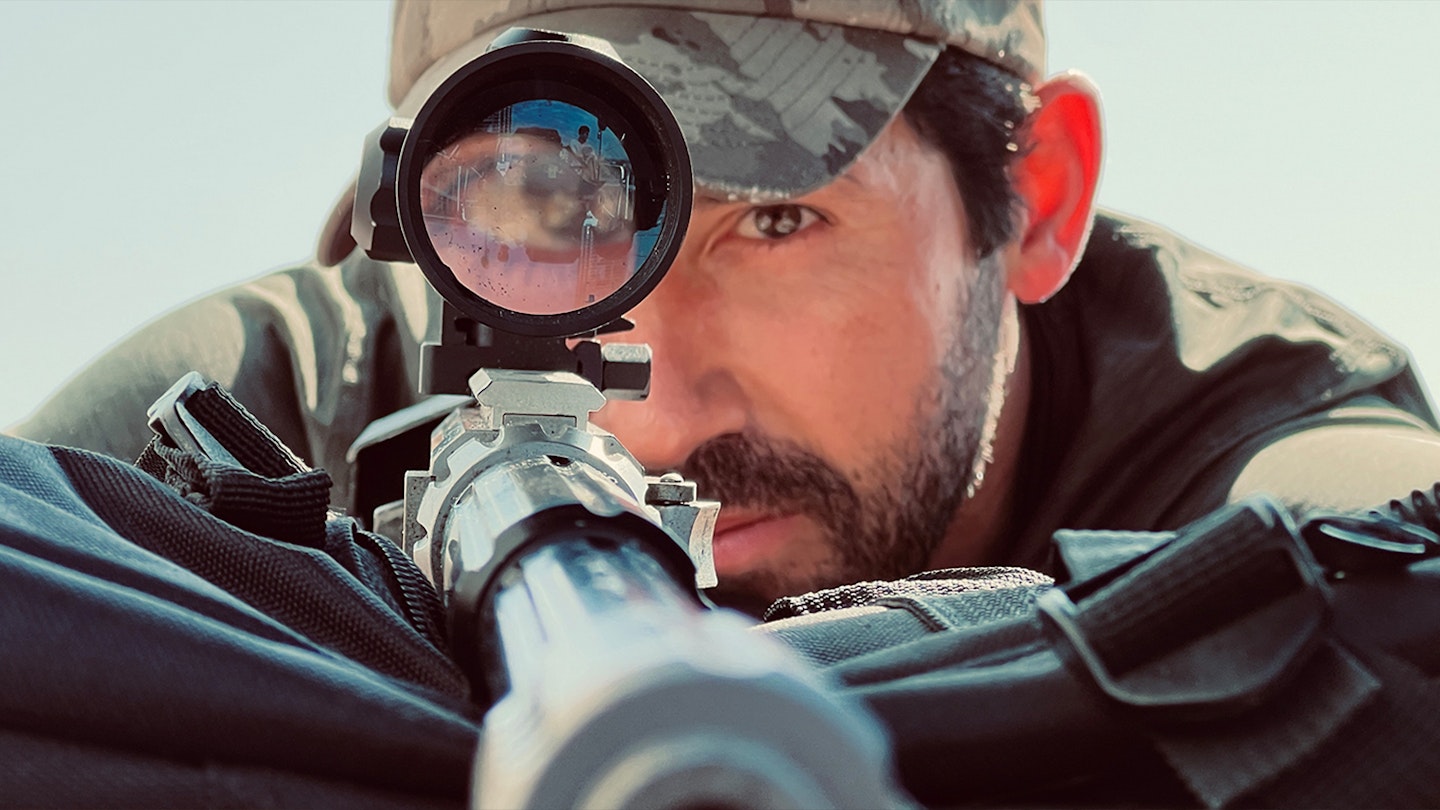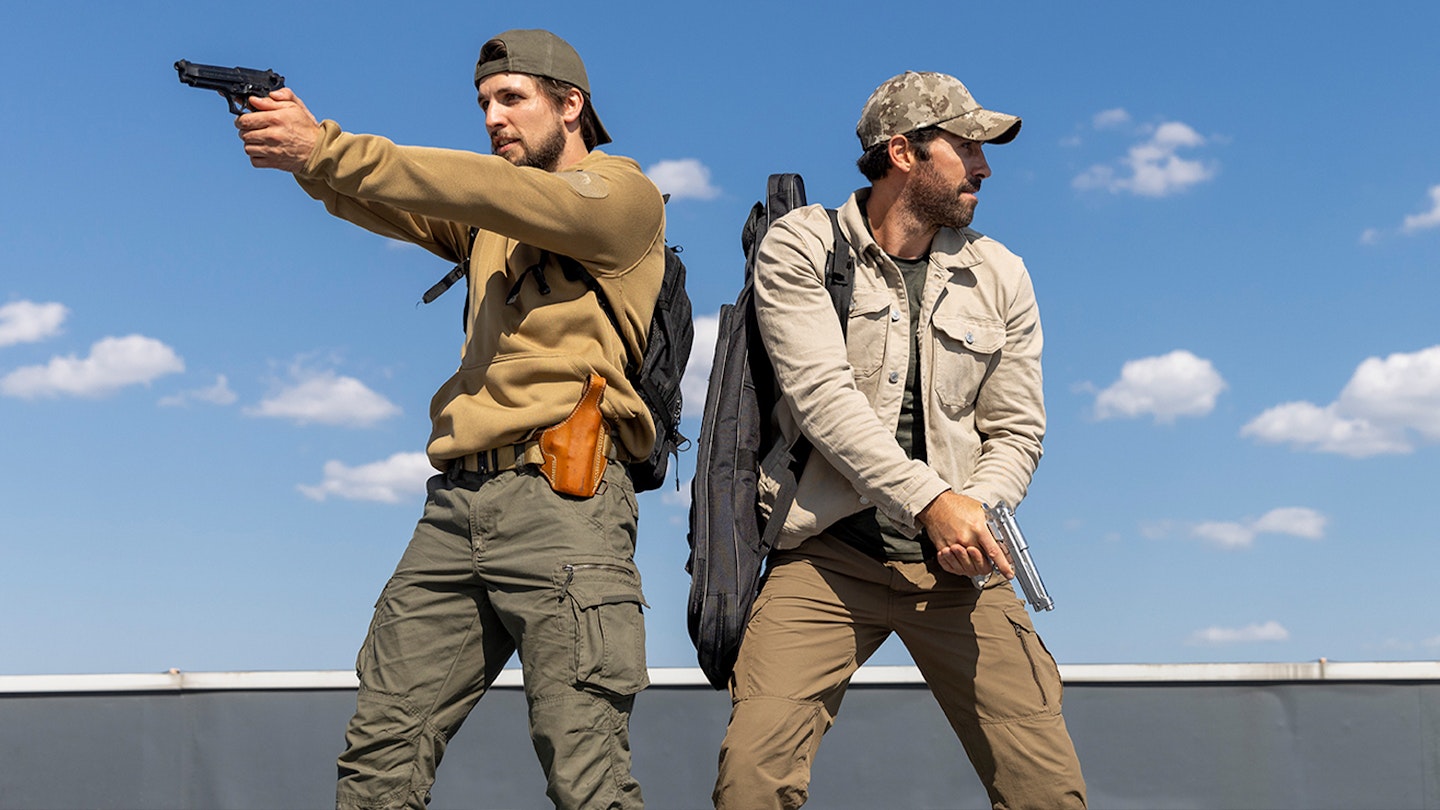On a Thursday in North London, Empire finds Scott Adkins conducting a symphony of pain. The blunt thud of bodies slamming into concrete; the wheeze of one criminal henchman, as a spin kick impacts his torso; the groans of the henchmen Adkins has already cooly dispatched, writhing on the floor… these are the sounds in the action star’s orchestra. They’re echoing around the North London underpass where filming is underway on Take Cover, his latest propulsive thriller. “You alright, mate?” the 48-year-old asks one stuntman who he sent spinning through the air like a rag doll, the second director Nick McKinless calls cut. The stuntman smiles and nods, ready to go again – because of course he is. To stuntmen in the action movie-making community in Britain, receiving a blow to the windpipe from Scott Adkins is something of an honour.

With over sixty films under his black belt, most of which are low-budget Brit flicks, the Birmingham-born actor is a one-man, karate-kicking cottage industry. Even as his career has skyrocketed, with appearances in franchises like John Wick and the Marvel Cinematic Universe, Adkins has continued to make time for a genre of film regularly dismissed for its low budgets and simpler spectacles, compared to the action movies of Hollywood. British action, though, commands a devoted fanbase, who turn out en masse for movies like Take Cover, about a world-weary professional sniper and his best friend Ken (Jack Parr), who find themselves trapped in an all-glass penthouse by a rival marksman.
“I love doing both types of films, really,” Adkins tells Empire between takes, switching back into his thick Brummie accent (his character in the film, Sam, is American). “There’s a buzz on a smaller set that’s really addictive, that I’ll always have a huge passion for. I can be a bit more stuck in with the filmmaking side on a film like this, too, compared to when you’re part of a big machine.” He’s not wrong on that front. Between takes of the brutal fight sequence being shot today, Adkins will regularly walk over to the monitors to play back the latest take, and assess with McKinless where that take might have fallen short of perfection. What to most might look like expertly-executed fight choreography, to Adkins and the first-time director – himself a stunt performer and coordinator, known for films like Fast X and Justice League – is a fraction off; one lung-collapsing kick to the abdomen of an enemy could have been smoother, the pair decide. And so everyone dusts themselves off for another painful-looking go.
“I am who I am because of films like this.”
This dedication is why British action deserves more respect than it’s given. Made on a fraction of the dime afforded to blockbusters, being on set is a reminder of the resourcefulness and passion poured into films like this and other Adkins vehicles, like 2021’s One Shot – a single-take thriller about a CIA operative under siege as he transports a dangerous criminal. “You do have to do things differently and find clever ways to deliver thrills,” says McKinless. “That’s the challenge and the fun of it, honestly.”
Which is what makes the explosive madness of Take Cover all the more impressive. The film ups the tension (and squeezes the most from its budget) by confining the bulk of its runtime to one location – a huge penthouse suite built on a soundstage, with huge screens surrounding it replicating a Frankfurt skyline. What goes down in that apartment is claustrophobic and close-quarters, with fist fights evocative of the Bourne series (another franchise Adkins has appeared in as a stunt person). But before the film reaches that locale, there’s the small matter of a pulse-racing introduction to Sam and Ken, as they bungle a hit from a London rooftop and a police chase ensues – where you suspect most of the movie’s budget was spent. It’s this scene that Empire doesn’t just get to witness, but play a small part in as an extra – leaping back in shock as a trio of police cars speed past beneath the arches of Wembley Stadium. (Oscar voters, come awards season, please do consider “Man Surprised By Police Vehicle” for Best Supporting Actor; we truly gave it our all.)
Even more of a surprise than that police vehicle to Empire is the electricity and feeling of community on set. The crew, it transpires, are no strangers: many of them often work together, on similar movies for the film’s production company, Signature Entertainment. And today’s Wembley locale is no mere film set where one single project is being filmed – in an office on site, editors are hard at work piecing together another movie full of similar bullet-flying chaos. The excitement is palpable.

It’s that excitement that makes movies like Take Cover so addictive for Adkins, who thrives on their buzz. “I am who I am because of films like this,” he tells Empire, explaining that he’d be delighted if his growing spotlight in blockbuster cinema can help shine a light on these smaller productions he still turns out for. “I love making these movies because they’re a different flavour to your Deadpools, your John Wicks. It’s all about variety at the end of the day and getting a kick out of coming to work.” Words probably worth paying attention to; when it comes to kicking, Adkins knows a thing or two.
Is Take Cover the film of the year? No. But is it full of pulpy excitement and adrenaline-racing choreography? You bet. And like so many of the Brit action flicks written off as straight-to-VOD fodder, it’s made with a passion and care that’s often overlooked. On the set of Take Cover, there’s simply no covering that up.
Take Cover is out now on DVD and digital
